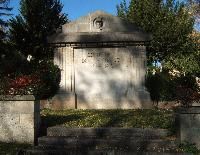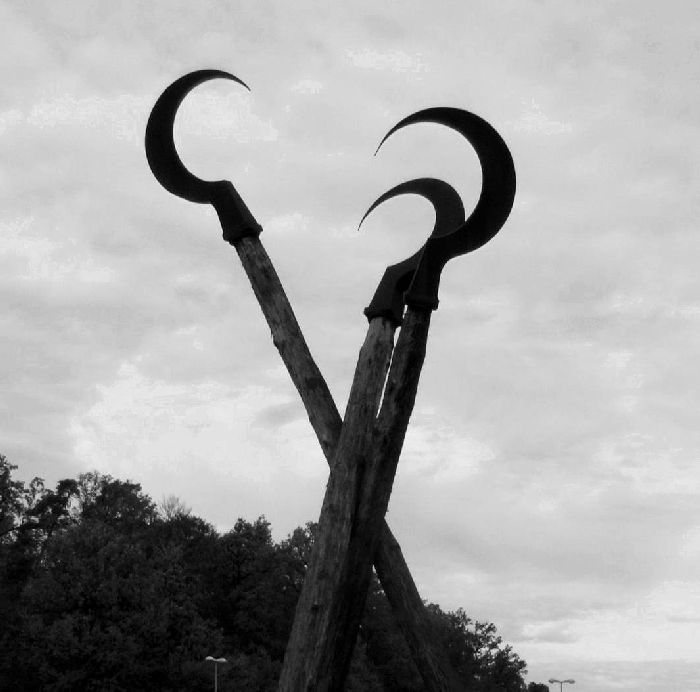World War One Cemetery, Tuebingen
Pictures and text by Mark R. Hatlie
These pictures were taken on October 17, 2005, in the municipal cemetery behind the university. While the cemetery is generally well kept, there was no sign of any recent activity, no candles or fresh flowers as I had sometimes seen in the World War One cemetery in Konstanz ten years ago. It is usually the case, however, and it is in this one as well, that the dead buried here are not necessarily from local families. They are those who died in local hospitals of their wounds.
The city construction administrator (Baumeister) secured 80 gravesites for a military cemetery in the fall of 1914. By the summer of 1916 it already had 100 dead. So it was redesigned to take 250 simple graves. For a week, the new design was displayed in the window of the Osiander bookstore down town.
In February of 1921, the city approved the money for a real memorial complex at the site, where 261 soldiers who had died in Tuebingen hospitals lay buried. The unveiling took place on 20 October of the same year, dreary day according to reports. A black-clad crowd made its way to the cemetery, men's choirs sang, there were speeches and sermons. Eulogies were said and wreaths layed by the mayor, representatives of the Wuerttemberg officers associationa, military and veterans organizations, the Reichsbund for the wounded and widowed, and a student representative.
The Catholic city priest said in his sermon that he felt as though the ground were opening up and the dead were speaking to us from the earth. They were exhorting us to "Protect life, maintain loyalty, protect the youth, keep the peace!...Only fools think they are free when they free themselves from duty. Oh no, the realm of duty, that is the field on which you must prove yourselves as we have proven ourselves, that is your field of honor."
The theme of the dead speaking from the earth at the burial site is a theme also heard in the context of the Brethren Cemetery in Riga, Latvia. That reference is, however, not yet available at the webpage here - coming soon.
Source: Hornbogen, Helmut: Der Tübinger Stadtfriedhof. Wege durch den Garten der Erinnerung. Verlag Schwäbisches Tagblatt: Tübingen, 19??.













